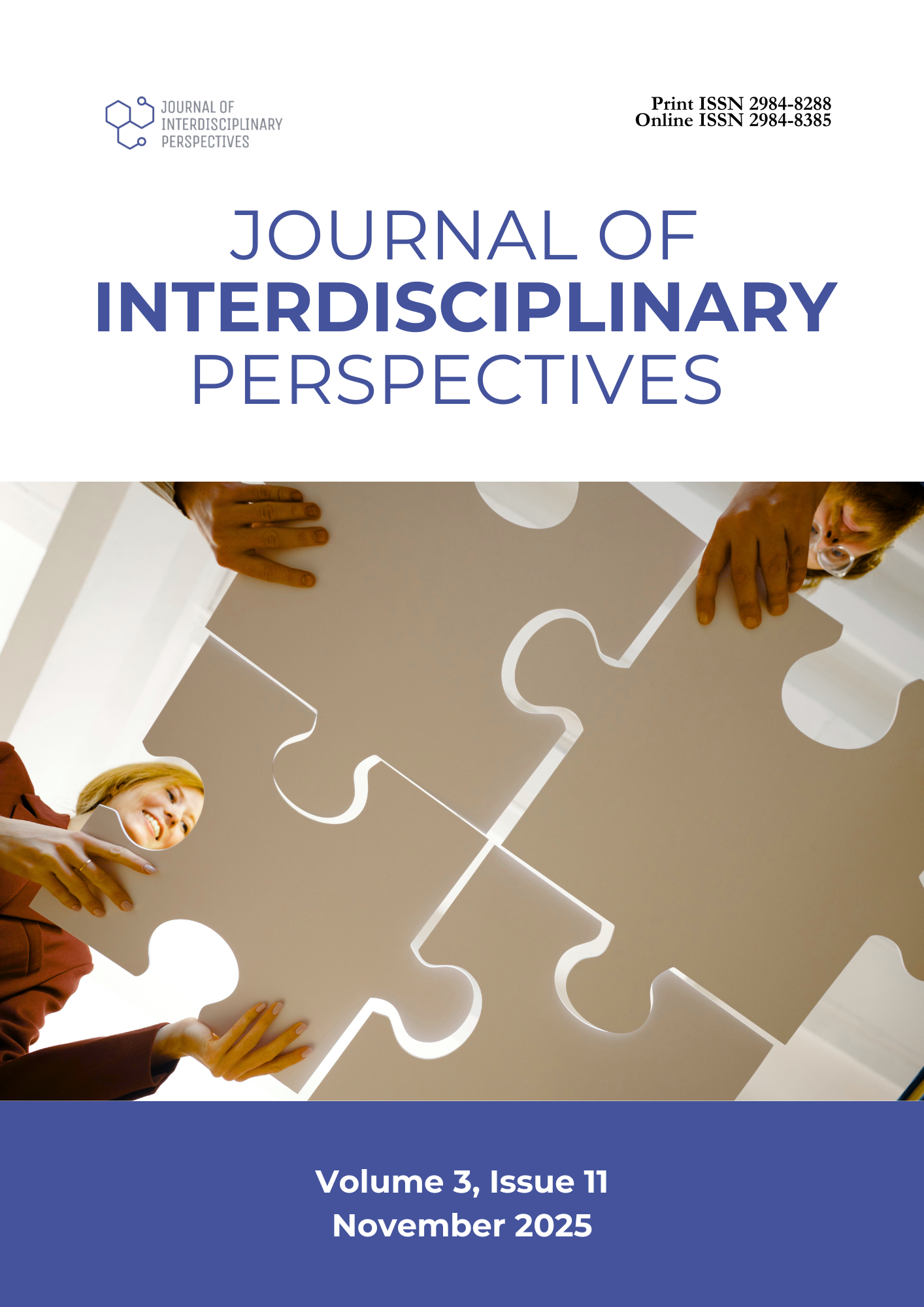Taro Kropek: Its Commercial Viability
DOI:
https://doi.org/10.69569/jip.2025.652Keywords:
Acceptability, Financial analysis, Food innovation, Sensory evaluation, Taro kropekAbstract
This study investigated the development, sensory acceptability, and financial viability of taro-based kropek as an alternative snack product. Despite taro’s nutritional value and abundance, it remains underutilized compared to other root crops. The study was conducted to generally determine the commercial viability of taro kropek made with taro flour, based on six (6) parameters: appearance, texture, taste, aroma, color, and general acceptability. Financial analysis to determine profitability, return on investment (ROI), and the break-even point was also conducted. Fresh taro was manually turned into flour and then made into kropek. The finished product was evaluated by 100 consumer panelists using a 9-point Hedonic Scale and randomly distributed across five (5) treatments in a Completely Randomized Design (CRD). Results revealed that flour ratio levels significantly influenced appearance (F = 13.33, p < 0.01), color (F = 70.07, p < 0.01), texture (F = 6.50, p < 0.01) and overall acceptability (F = 17.11, p < 0.01), but not aroma (F = 2.90, ns) and taste (F = 0.21, ns). Numerically, 1000 g rice flour (control) scored highest in appearance (mean = 8.59) and color (8.47), while 1000 g taro flour achieved the highest scores in taste (8.15) and texture (8.19). All treatments were rated “liked very much” to “liked extremely,” with overall acceptability ranging from 7.77 to 8.17. Financial analysis showed decreasing ROI as taro substitution increased. Findings highlight taro’s potential as a functional, locally sourced ingredient for diversifying snacks. Based on the results, moderate taro incorporation (250–500 g) is recommended to balance consumer acceptability and profitability. At the same time, future studies should include nutritional profiling, shelf-life, and market testing to support large-scale commercialization.
Downloads
References
Dolorico, R. C. (2025). Formulation, analysis, and acceptability of root crops (kropek). Pantao International Journal of the Humanities and Social Sciences, 4(2), 106. https://doi.org/10.69651/PIJHSS0402106
Espejo-Hermes, J. (1998). Fish processing technology in the tropics. Tawid Publications.
Estrella, S. (2022, September 1). Kropek: The history of our favorite prawn cracker. Pepper.ph. https://pepper.ph/blog/kropek-history
Ferdaus, M. J., Chukwu-Munsen, E., Foguel, A., & da Silva, R. C. (2023). Taro roots: An underexploited root crop. Nutrients, 15(15), 3337. https://doi.org/10.3390/nu15153337
Floros, J. D., Newsome, R., Fisher, W., Barbosa-Cánovas, G. V., Chen, H., Dunne, C. P., & Ziegler, G. R. (2010). Feeding the world today and tomorrow: The importance of food science and technology: An IFT scientific review. Comprehensive Reviews in Food Science and Food Safety, 9(5), 572–599. https://doi.org/10.1111/j.1541-4337.2010.00127.x
Fufa, T., Oselebe, H., Nnamani, C. V., Afiukwa, C. A., & Uyoh, E. A. (2021). Systematic review on farmers’ perceptions, preferences and utilization patterns of taro [Colocasia esculenta (L.) Scott] for food and nutrition security in Nigeria. Journal of Plant Sciences, 9(4), 224–233. https://doi.org/10.11648/j.jps.20210904.23
Hasmadi, M., Salit, M. R., & Jamaluddin, H. (2023). Color characteristics of cassava, maize, taro, and banana flours. Revista Bionatura, 8(3), 2375–2382.
Hendek Ertop, M., Atasoy, R., & Akın, Ş. S. (2019). Evaluation of taro (Colocasia esculenta) flour as a hydrocolloid on the physicochemical, rheological, and sensorial properties of milk pudding. International Journal of Food Science & Technology, 54(12), 3351–3359. https://doi.org/10.1111/ijfs.14212
Himeda, M., Njintang, N. Y., Fombang, E., Facho, B., Kitissou, P., Mbofung, C. M. F., & Scher, J. (2022). Chemical composition, functional and sensory characteristics of wheat–taro composite flours and biscuits. Journal of Food Science and Technology, 59(6), 2230–2240. https://doi.org/10.1007/s13197-021-05254-6
Hutchings, J. B. (1977). The importance of the visual appearance of food to the food processor and consumer. Journal of Food Quality, 1(3), 267–278. https://doi.org/10.1111/j.1745-4557.1977.tb00945.x
Johnson, M. (2021, February 2). The 9-point hedonic scale. Society of Sensory Professionals. https://tinyurl.com/2ff9n66z
Kaushal, P., Kumar, V., & Sharma, H. K. (2012). Comparative study of physicochemical, functional, antinutritional, and pasting properties of taro (Colocasia esculenta), rice (Oryza sativa) flour, pigeonpea (Cajanus cajan) flour, and their blends. LWT - Food Science and Technology, 48(1), 59–68. https://doi.org/10.1016/j.lwt.2012.02.028
Kaushal, P., Kumar, V., & Sharma, H. K. (2015). Utilization of taro (Colocasia esculenta): A review. Journal of Food Science and Technology, 52(1), 27–40. https://doi.org/10.1007/s13197-013-0933-y
Monteiro, C. A., Levy, R. B., Claro, R. M., Castro, I. R. R. de., & Cannon, G. (2010). A new classification of foods based on the extent and purpose of their processing. Cadernos de Saúde Pública, 26(11), 2039–2049. https://doi.org/10.1590/S0102-311X2010001100005
Nigussie, M. (2025). Nutritional and anti-nutritional quality of taro (Colocasia esculenta): A review. Innovation, 6(1), 8–14. https://doi.org/10.11648/j.innov.20250601.12
Nuñez, M. G., Olivar, G. M. C., Terana, C. C., & Mutya, R. C. (2023). Sensory attributes and acceptability of taro (Colocasia esculenta) root kropeck. Journal of Applied and Natural Science, 15(2), 450–458. https://doi.org/10.31018/jans.v15i2.4483
Pereira, T., Barroso, S., & Gil, M. M. (2021). Food texture design by 3D printing: A review. Foods, 10(2), 320. https://doi.org/10.3390/foods10020320
Sharif, M. K., Butt, M. S., Sharif, H. R., & Nasir, M. (2017). Sensory evaluation and consumer acceptability. In Handbook of Food Science and Technology (pp. 362–386). [ResearchGate]. https://tinyurl.com/npd7rtpa
Stich, E. (2016). Food color and coloring food. In Food Quality and Shelf Life (pp. 1–35). Academic Press. https://doi.org/10.1016/B978-0-08-100371-8.00001-4
Suriati, L., Mardewi, N. K., Sukmadewi, D. K. T., Datrini, L. K., Manik Cindrawati, A. A. S., Sulis Dewi, N. L. P., & Raditya Putra, P. A. (2023). Regional leading product development program of wanagiri taro processing group, Sukasada District, Buleleng Regency. AJARCDE (Asian Journal of Applied Research for Community Development and Empowerment), 7(2), 79-82. https://doi.org/10.29165/ajarcdev7i2.264ajarcde-safe-network.org
Suriati, L., Mardewi, N. K., Sukmadewi, D. K. T., Datrini, L. K., Raditya Putra, P. A., & Widiantara Putra, I. W. (2024). Development of packaging and product variations of taro chips at the wanagiri taro processing group. Asian Journal of Advances in Agricultural Research, 24(8), 10-16. https://doi.org/10.9734/ajaar/2024/v24i8532
Wang, S., Chen, H., & Sun, B. (2020). Recent progress in food flavor analysis using gas chromatography–ion mobility spectrometry (GC–IMS). Food Chemistry, 315, 126158. https://doi.org/10.1016/j.foodchem.2019.126158
Zelman, K. (2024, October 16). Health benefits of taro roots. Nourish by WebMD. https://tinyurl.com/26r5a73b
Downloads
Published
How to Cite
Issue
Section
License
Copyright (c) 2025 Journal of Interdisciplinary Perspectives

This work is licensed under a Creative Commons Attribution-NonCommercial 4.0 International License.









